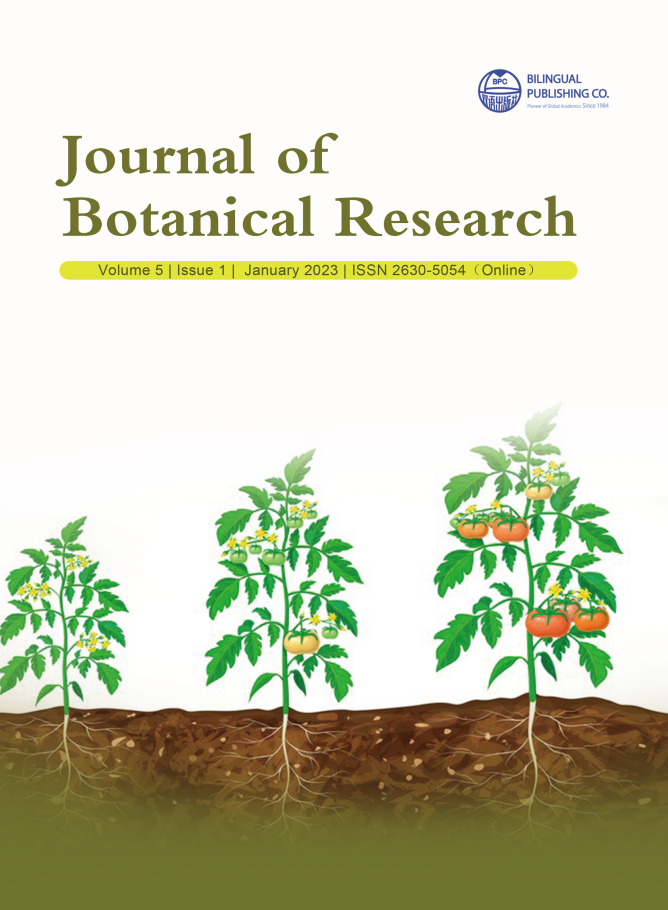-
245
-
198
-
169
-
168
-
136
Evaluation of Women’s Contribution in Agroforestry Demonstration through Moringa Species Introduction in Western Oromia, Ethiopia
DOI:
https://doi.org/10.30564/jbr.v5i1.5508Abstract
Agroforestry technologies are very keen practices in most small-scale farming systems where gender issues are not well considered in most developing countries. Moringa is a tropical plant that consists of 13 species, while five of them are found in Ethiopia. This study aimed to evaluate the potential and contribution of women in agroforestry demonstrations where Moringa oleifera and Moringa stenopetala are introduced in farmers’ fields. Selection of the best performing moringa species and preferred by farmers for further scaling up was also another objective. The activity was conducted in five districts of west and east Wallagga zones. A total of 10 FREG comprising 150 farmers were established. The two moringa species were planted on 100 farmers’ fields where 50 women and 50 men were purposively selected and given responsibilities of moringa demonstration. Leaflets and practical training on moringa production, importance and utilization were prepared and given to all concerned bodies. 84% of women and only 32% of men effectively demonstrated the moringa species. A total of 200 farmers were interviewed to evaluate and select the best from the two species depending on their growth performance, fresh leaf taste and odor, and survival rate. Based on the above criteria, 143 (71.5%) farmers preferred Moringa oleifera. In general, the two moringa species were performed well in most places, and its utilization started at household level. Finally, the authors recommend that women are the potential for demonstrating agroforestry technologies, and Moringa oleifera is a more preferred species in western Oromia.
Keywords:
Agroforestry; Demonstration; Feedback; Growth performance; Moringa; WomenReferences
[1] Mulyoutami, E., Awalina, D., Martini, E., et al., 2016. Agroforestry and Forestry in Sulawesi series: Women’s participation in agroforestry: More benefit or burden? A gendered analysis of Gorontalo Province. Working Paper 226. Bogor, Indonesia: World Agroforestry Centre (ICRAF) Southeast Asia Regional Program. DOI: http://dx.doi.org/10.5716/WP16036.PDF
[2] Kiptot, E., Franzel, S.C., 2011. Gender and Agroforestry in Africa: Are Women Participating? [Internet]. Nairobi: World Agroforestry Centre. Available from: http://apps.worldagroforestry.org/downloads/Publications/PDFS/OP16988.pdf
[3] Paudel, D., Tiwari, K.R., Raut, N., et al., 2019. Agroforestry practices in midhills of Nepal from gender perspective. Open Journal of Forestry. 9(04), 323.
[4] Abebe, T., Mulu, D., 2017. The role of women in the management and utilization of home garden: The case of Dale District, in southern Ethiopia. Asian Journal of Plant Science and Research. 7(4), 41-54.
[5] Samuel, D., Terefe, R., Senbeto, M., et al., 2016. Evaluation of two Moringa species for adaptability and growth performance under Bako conditions. Evaluation. 6(9).
[6] Bosch, C.H., 2004. Moringa stenopetala (Baker f.) Cufod. PROTA 2: Vegetables/Légumes. [CD-Rom]. Protologue: Senckenberg. Biol. 38, 407.
[7] Sutherland, J.P., Flokard, G.K., Mtawali, M.A., et al., 1994. Moringa oleifera as a natural coagulant. 20th WEDC Conference: Affrodable Water Supply and Sanitation. Colombo, Sri Lanka. p. 297-299.
[8] Meskel, T.W., Ketema, M., Haji, J. and Zemedu, L., 2020. Welfare Impact of Moringa Market Participation in Southern Ethiopia. Sustainable Agriculture Research, 9(526-2021-484). pp.98-113.
[9] Tree Africa, 2006. Leaflets of A Tree for Nutrients, 76 Queen Elizabeth Road Greendale, Harare, Zimbabwe [Internet]. Available from: http://www.moringanews.org
[10] Orwa, C., Mutua, A., Kindt, R., et al., 2009. Agrofores Tree Database: A tree Reference and Selection Guide Version 4.0 [Internet]. Available from:https://www.cabdirect.org/cabdirect/abstract/20177200441
[11] Seifu, E., 2014. Actual and potential applications of Moringa stenopetala, underutilized indigenous vegetable of southern Ethiopia: A review. International Journal of Agricultural & Food Research. 3(4),8-19.
Downloads
How to Cite
Issue
Article Type
License
Copyright © 2023 Author(s)

This is an open access article under the Creative Commons Attribution-NonCommercial 4.0 International (CC BY-NC 4.0) License.




 Mezgebu Senbeto Duguma
Mezgebu Senbeto Duguma






